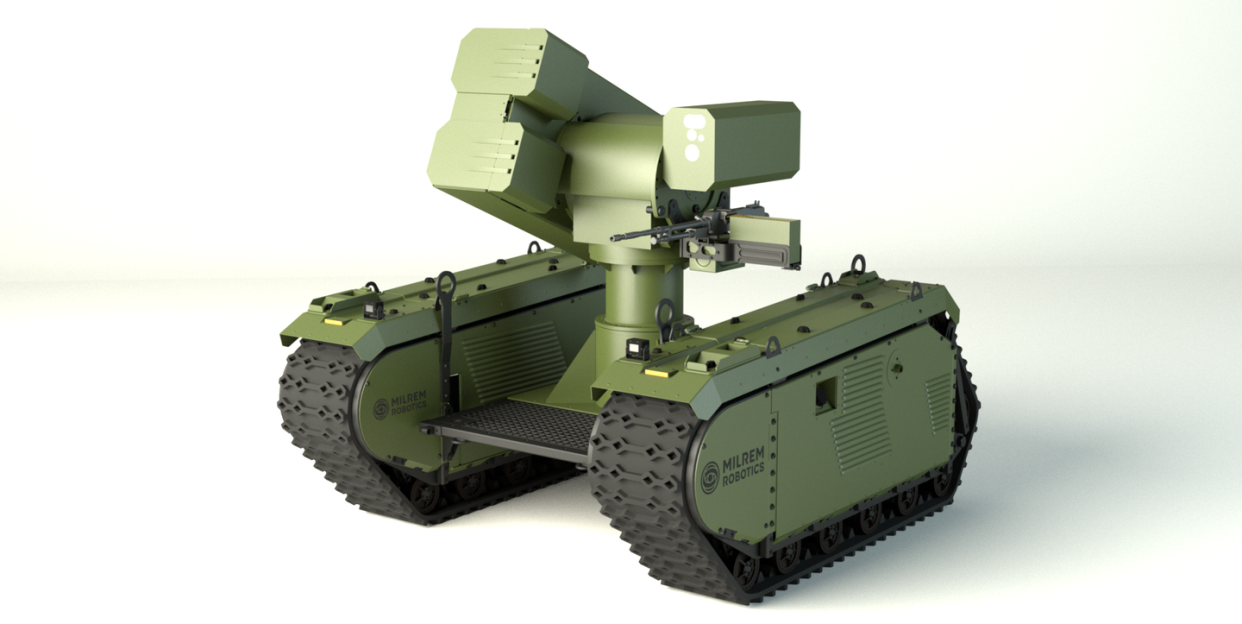The Army Wants To Use AI To Predict Where the Next Battle Will Take Place

The U.S. Army planes to use drones and AI to help keep tabs on the enemy.
Drones will locate and identify enemy forces, then feed the data to an AI constructing a "big picture" of the battlefield.
The AI will also interpret data to alert friendly commanders to possible enemy attacks.
One of the most difficult of tasks on the modern battlefield is predicting where the enemy will attack next. Although the Army has plenty of ways to find the enemy, figuring out his intentions are something else entirely. Now the U.S. Army plans to use drones, target recognition, artificial intelligence, and machine learning to tell the colonels and generals where an attack appears imminent.
The Army’s Aided Threat Recognition from Mobile Cooperative and Autonomous Sensors (ATR-MCAS) program aims to operate autonomous air and ground drones throughout the battle zone, keeping a continuous watch on the enemy. The drones identify the enemy weapons systems, such as tanks or infantry fighting vehicles, then pass on the sightings to the AI. The AI will then, according to the Army, “identify, classify, and geo-locate entities, obstacles, and potential threats, generating a “common operating picture” (COP) of the battle zone.
Situational awareness, or the ability to know your position in relation to your surroundings and the enemy, is vitally important in wartime. A U.S. Army tank platoon slugging it out with their enemy counterparts may lose situational awareness due to the demands of combat. ATR-MCAS will allow those tankers to devote their attention entirely on the fight at hand, without the distraction of what is going on to the left and right of them. Once the battle is over, a quick look at the COP will get the platoon up to speed for the next fight.
Locating enemy forces is nothing new, but it’s what ATR-MCAS does next that makes it next level. The COP data is, “processed by an AI-enabled decision support agent, which can make recommendations such as the prioritization of the threats for Soldiers to utilize." For example, if it notices a dozen tanks proceeding down one road towards U.S. troops and four tanks proceeding down a parallel road, it might flag the larger number of tanks as a higher priority.
ATR-MCAS will never take the place of the S-2, the human intelligence officer in an Army battalion. An AI is no match for a trained and experienced human eye, but what it can do is quickly analyze and prioritize information in order of likely importance. The AI can help make sense of dozens or even hundreds of sightings of enemy equipment on the battlefield, ensuring combat leaders and their staff avoid information overload while still bringing threats they might have missed to their attention.
Here’s an example of how it might be used: A U.S. Army armor battalion is defending a NATO ally from Russian attack. The commander, a lieutenant colonel, is trying to identify the Russian forces streaming towards him while ensuring his troops are properly armed, fed, and situated. In the chaos of war, with ground, air, unmanned, artillery, and long range missile attacks to contend with, the battalion’s leadership might miss clues that a Russian brigade is massing and preparing to attack. ATR-MCAS’ artificial intelligence would piece together the clues and alert the battalion commander of the impending danger.
Source: DVIDS.
You Might Also Like

